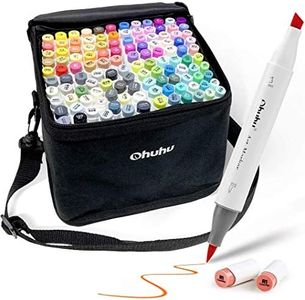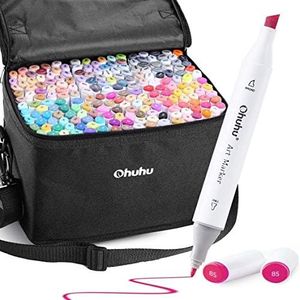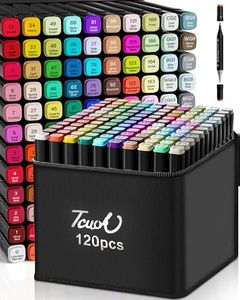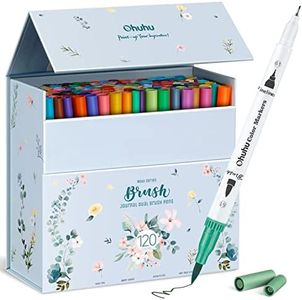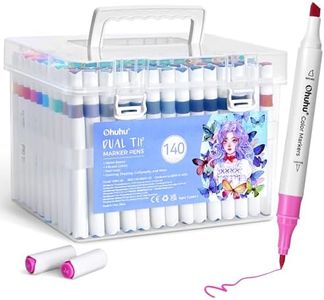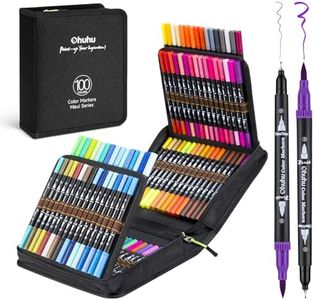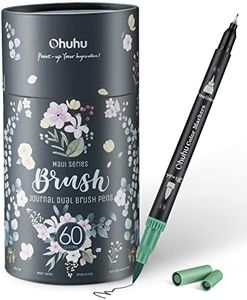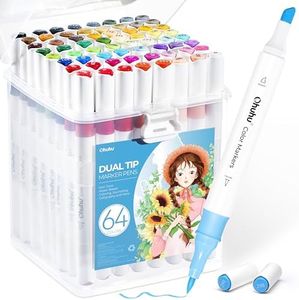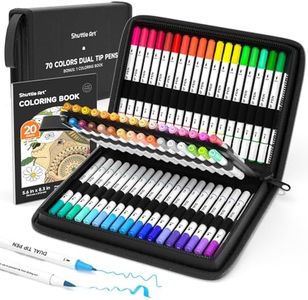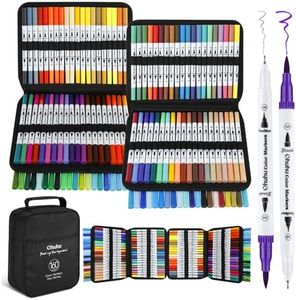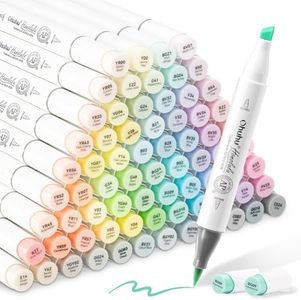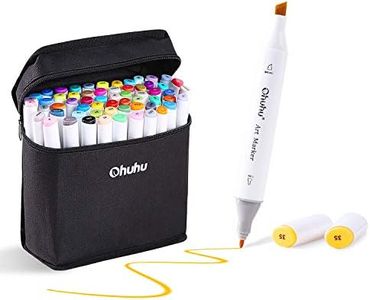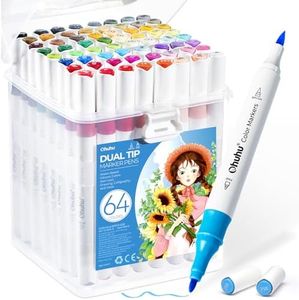We Use CookiesWe use cookies to enhance the security, performance,
functionality and for analytical and promotional activities. By continuing to browse this site you
are agreeing to our privacy policy
10 Best Markers For Adult Coloring Books
From leading brands and best sellers available on the web.Buying Guide for the Best Markers For Adult Coloring Books
When choosing markers for adult coloring books, it's important to consider the type of coloring experience you want, as well as how the markers interact with your chosen coloring books. The right set of markers not only brings your art to life with vibrant colors but also affects the ease of coloring, the look of your finished piece, and your overall enjoyment. By understanding key features, you can find markers that suit your artistic needs and make the coloring process smooth and satisfying.Ink TypeInk type refers to the substance inside the marker that colors the paper. The most common types are water-based and alcohol-based inks. Water-based markers are great for less bleed-through, easier blending, and are often more suitable for most coloring book papers. Alcohol-based markers, while offering more vibrant and blendable colors, have a higher chance of bleeding through thin paper and may require special coloring books or extra sheets underneath to protect other pages. Your needs will guide you: choose water-based for simple use and coloring on thinner paper, and alcohol-based if you’re looking for professional blending effects and rich saturation.
Tip Type and SizeThe tip type and size determine how you apply color to the page. Fine tips are ideal for detailed work and small spaces, while broad or brush tips allow for faster coverage and creative strokes. Some markers are dual-tipped, with a different size or shape on each end, giving you flexibility. If you enjoy intricate mandalas or detailed patterns, prioritize fine tips. For larger, bolder areas or a painterly feel, consider broad or brush tips. A mixed set can be useful if you want flexibility for different coloring styles.
Color RangeColor range is the variety and number of colors offered in a set. Larger sets provide more shades and tones, giving you more options for shading, blending, and creativity. Smaller sets are easier to manage and store but offer fewer choices. If you like experimenting with many color combinations or working on complex designs, a larger color range is beneficial. For casual coloring or smaller projects, a basic set may be enough.
Bleed-ThroughBleed-through happens when ink soaks through the paper and stains the page underneath. This is a key concern with any kind of marker. The likelihood of bleed-through depends on the ink type and the thickness and quality of your coloring book paper. Always consider the kind of paper you'll be using, and if necessary, test the marker on a small or less important area. For thin books or double-sided pages, pick markers with lower bleed-through risk, such as water-based markers or those specifically labeled as low-bleed.
BlendabilityBlendability describes how easily colors can be mixed together to create smooth transitions and shading. Alcohol-based markers tend to blend very well, creating gradients, while water-based markers sometimes blend less smoothly but can still give pleasing effects, especially with a bit of practice or by layering. If adding depth and subtlety to your coloring is important, look for markers that users say blend easily, and consider practicing blending techniques to get the best results.
Comfort and UsabilityComfort refers to how easy it is to hold and use the markers, especially if you plan to color for long periods. A comfortable grip, balanced weight, and non-slip surface can make a big difference. If your coloring sessions last a while, try markers with ergonomic features or test how they feel in your hand before committing to a large set. This will ensure you enjoy your coloring time without discomfort.
